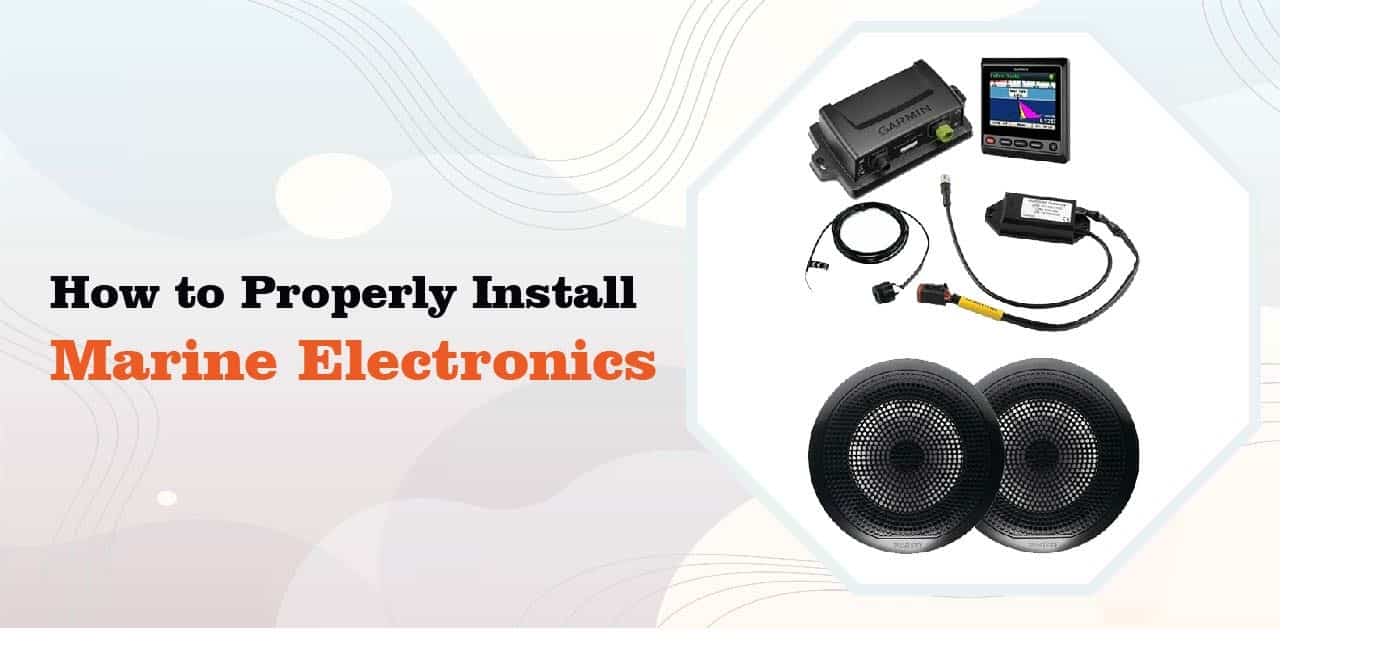How to Properly Install Marine Electronics
 Without a doubt, selecting features and equipment to install is simple, but putting them in place is not. A skilled installation can walk you through the stages of creating a helm you’ll like. The dazzling brightwork is simply the cherry on top. Choosing and installing new boat electronics is a challenge for many boaters. If you need Marine Electronics Installation and Boat Stereo Installation, splash-proof and weather-proof equipment will be your priority.
Without a doubt, selecting features and equipment to install is simple, but putting them in place is not. A skilled installation can walk you through the stages of creating a helm you’ll like. The dazzling brightwork is simply the cherry on top. Choosing and installing new boat electronics is a challenge for many boaters. If you need Marine Electronics Installation and Boat Stereo Installation, splash-proof and weather-proof equipment will be your priority.
Tips for Boat Electronics Installation:
When people try to install boat electronics on their own, they frequently run into several issues. It’s preferable to hire technicians with experience with boat electronic mounts. The installation of boat electronics will, without a doubt, take some time because it is a lengthy procedure. Marine Tech is best known for Marine Electronics Installation and Boat Stereo Installation, where you can book a free consultation with experts. Here are some tips you show strictly follow while installing equipment.
- Avoid Install Directly on Boat’s Electric Power:
When you connect electronic equipment directly to your boat’s electrical supply, the most typical circumstance that causes them to fail is when you do so. Whether you’re connecting a GPS, autopilot, depth sounder, or radar, if you connect too much power, such as 24 volts to a gadget that only accepts 12, you’ll end up with Kentucky Fried equipment. Check the power requirements indicated in the owner’s handbook or on the device’s label to avoid a tragedy, and then double-check your wiring.
- Cross Wiring:
Cables and connections are included with the best boat electronics. Colored cables are available, as well as insulated cables. These wire bundles link two power sources and others with NMEA ports, allowing the electronic equipment to communicate with other devices. Connect the remaining alarms, speakers, and transducers after wiring the NMEA connections. The electricity is immediately pushed with the gadget to increase its operation by combining all of the cables of the boat electronics box.
- Battery Twisting Direction:
The more batteries you place wrongly, the higher the voltage you give the gadget. It’s the same as changing the polarity on a plugged-in device: your gadget might not start on, blow its power protection, or finish up as burning junk. The battery should be connected with the correct polarity to avoid corrosion. Alkaline batteries are used in the best boat electronics because they are dependable and operate even when the batteries are low. In addition, to preserve the batteries in excellent condition, you should remove them from the boat electronics box.
- Avoid Wire Splicing:
When cutting and splicing cables or wires, another installation hazard arises. Manufacturers attempt to be kind by providing you with more cable than you’ll need to connect to an external antenna or transducer. People frequently make the error of chopping away extra wires. Connection sensitivity and efficiency are reduced as a result of this splicing. Clipping extra wire with a connector is a solid technique for the boat electronic mounts in surplus wiring. After clipping it, run the wire, and then begin the installation process all over again. Advanced splicing techniques, on the other hand, can be used to attach boat electronics.
- Antennas Placement at Distance:
A device should not interfere with another during the installation. A radar, for example, should not obstruct radio or GPS communications. The only way to avoid interference is to separate gadgets that have the same or similar frequencies. This installation will be the greatest boat electronics if it is given adequate room. In addition, damaged boat electronics can only be repaired by adjusting beam-width angles and other lines.
- Pull the Plug:
When modifications are made to connections while devices are in use, they might shorten. You risk damaging one or both units if you switch on your portable GPS to receive fixes, then activate the plotter to bring up a local chart, and then connect the two while they’re both on. When you remove a connector, you run the danger of allowing pins to make contact with a connection that shouldn’t be there, causing power to unintentionally surge through a line that’s supposed to accept data.
- Waterproof Device:
That electronic item may claim to be “waterproof,” and it may even float if dropped, but there’s no reason to test those claims. The term “splash proof” refers to a device’s ability to withstand being splashed with water while not allowing water to enter. Even though a gadget is classified as waterproof, if it is left in an area where it is continually exposed to the elements, something will inevitably happen. Corrosion of battery contacts is a possibility. Water can also get into the electronics compartment, causing component damage. This does occur. Nonetheless, try to keep your equipment as dry as possible.
- In a storm, no port is safe:
Deactivate any program that utilizes the same port when connecting an electrical device to a PC (usually the serial, COM1, or COM2 ports). An application for uploading and downloading waypoints usually has its setup page where you can specify the port and turn on or off any conflicting software. You can assure that the software won’t deliver a weird code that the electrical device isn’t searching for by isolating the devices or programs that operate on each port. If the device gets incorrect data, waypoints may become nonsensical places, or worse, the memory may be erased.
Also Read: Boat Electrical System Troubleshooting
